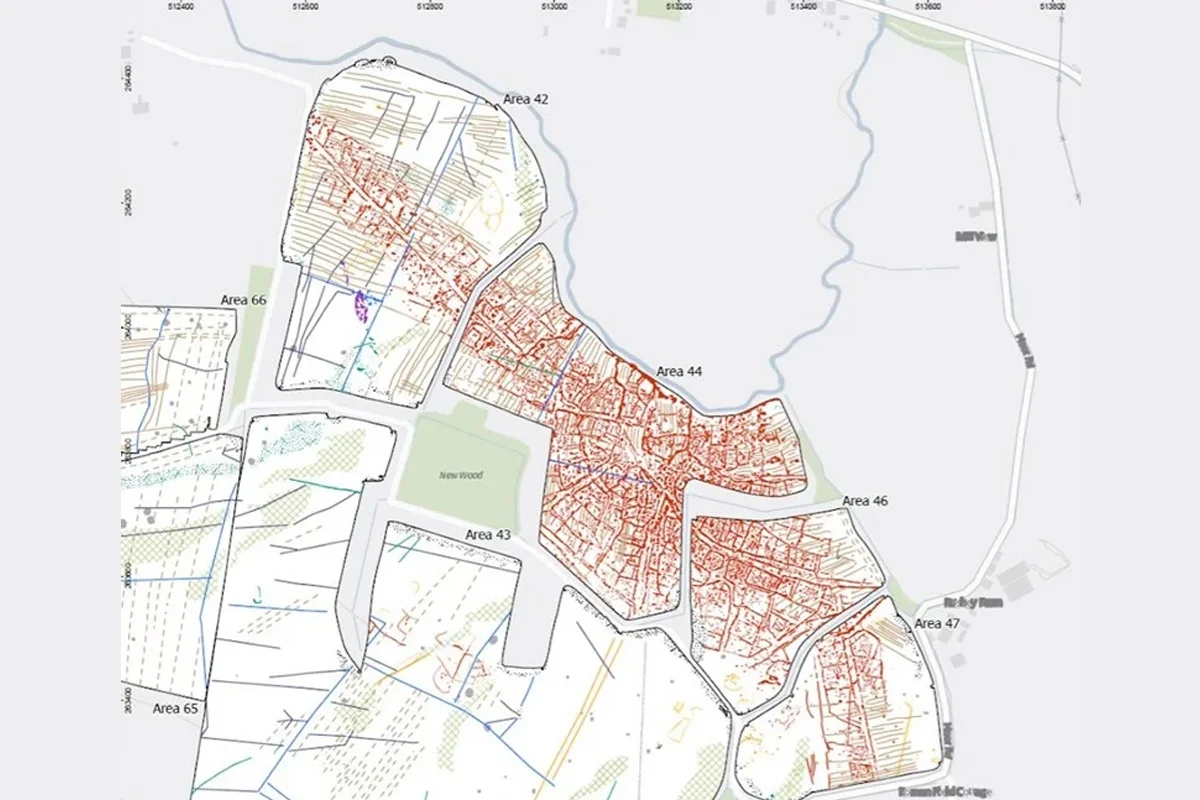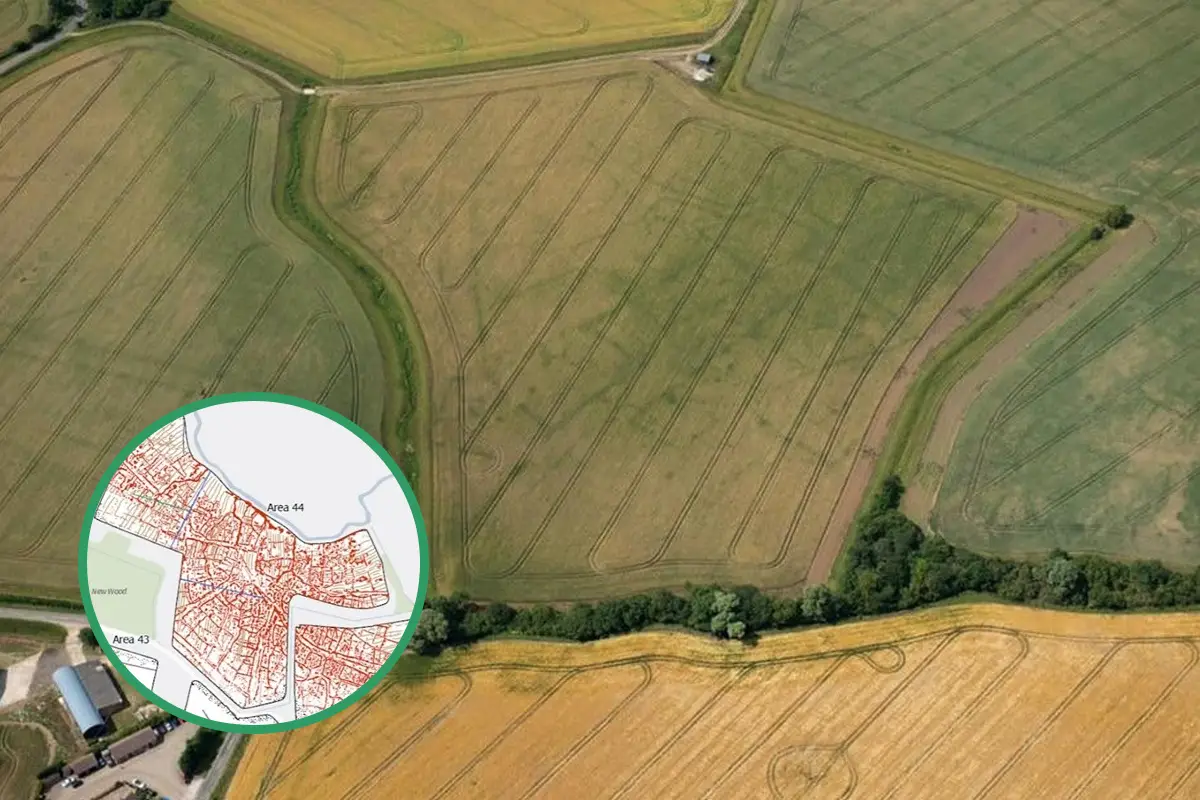In 2024, archaeologists from AOC Archaeology, working on behalf of East Park Energy, discovered the remains of a Roman town south of Great Staunton in Cambridgeshire, England.
East Park Energy is a solar farm and energy storage project, part of the UK’s transition to reach Net Zero through renewable energy.
The town was identified following a study using aerial photography and geophysical surveys, revealing extensive streets and buildings of a highly organised Roman settlement extending over 31 hectares.
The curvilinear plan-form of the town suggests it started as a pre-Roman settlement that was later Romanised, but this hypothesis needs further evidence to confirm.
Cropmarks at the site were previously recorded on the Cambridgeshire Historic Environment Record (HER), but a closer examination now indicates features such as pottery kilns, metal working forges, a villa complex, and traces of domestic and major industrial activities.

“The settlement is close to a main Roman road leading from Dorchester-on-Thames to Alconbury Weald which passes south of the settlement in a south-east to north-west alignment. This will have provided a good transport route for the settlement and, together with the River Kym, offered key communication links for the town,” said Historic England.
AOC archaeologists have already unearthed numerous Roman artefacts, including pottery, high status Samian Ware, animal bone, glass, copper alloy objects, iron objects, coins and shells.
Upon understanding the significance of the discovery, East Park Energy applied for the site to be given heritage protection as a scheduled monument and amended their plans for development.
“As a responsible developer, we have sought to redesign our scheme to preserve this discovery. We are therefore confirming that, as part of our upcoming statutory consultation, we will no longer be proposing to build solar panels on any of the land that has been scheduled,” said East Park Energy.
Further field investigations were paused over winter, but now the team from AOC have started to lay a series of trial trenches roughly 50 metres long to start exploring the buried archaeological features.
The site of the Roman town has now been declared a scheduled monument, while the archaeological works are set to be completed by August 2025.
Header Image Credit : Historic England
Sources : East Park Energy





